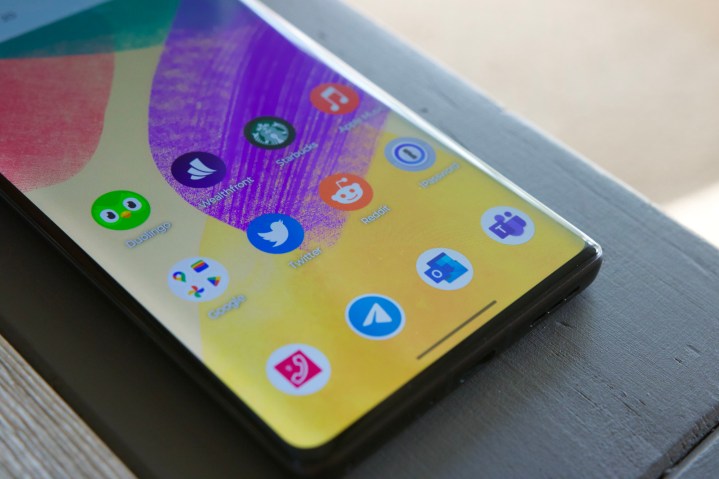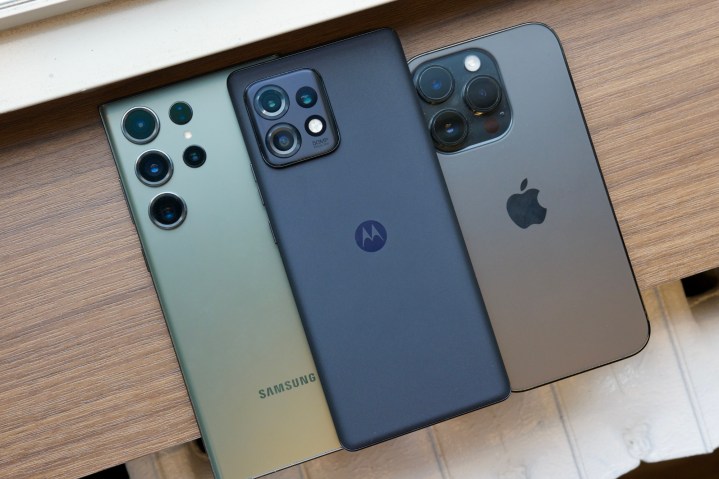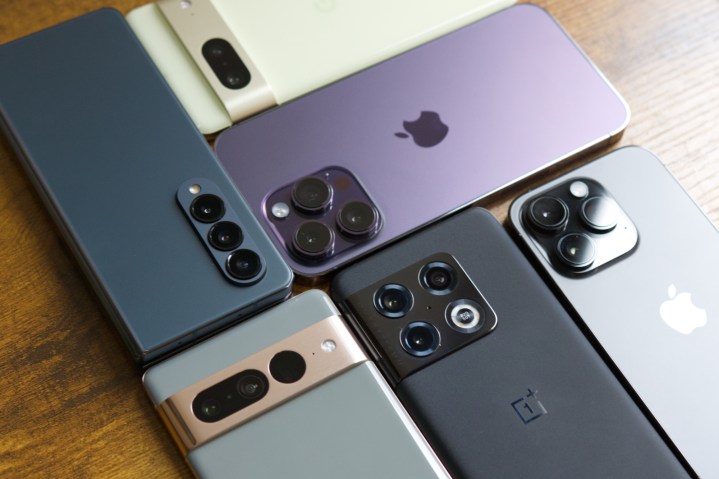
These days, it can be hard to find the best smartphone for yourself, unless you’re already loyal to a particular brand. Even then, maybe you want to venture out of your comfort zone and explore other options, but the choices can be overwhelming.
Here at Digital Trends, we’re here to help you choose your next smartphone — whether it’s Apple, Samsung, Google, or a smaller brand you may not have heard of until now. We’ve tried and tested all the latest smartphones to provide you, the reader, with valuable insight into a phone’s technical performance and everyday usability. But unlike other reviewers that may focus on more technical things, we focus more on the overall user experience. In other words, how would the average user get the most out of a phone?
Here’s how we test all the latest smartphones for our reviews.
How we test phone design

Design is a pretty subjective thing, but there are a lot of factors that come into play for this aspect. For example, how is the build quality and durability of the device, such as water and dust resistance?
Another thing that we like to inspect is how easy it is to use a particular phone one-handed. A few of us here at Digital Trends have hands on the smaller side, so all the large phones these days can be a struggle — but one-handed use is still important! Plus, how comfortable is the phone to hold? After extended use, sometimes a phone can cause hand cramps or have uncomfortable sharp edges, so we examine that as well.
We consider if the design is interesting, or if it’s just another glass slab. Does the manufacturer do anything to help the phone stand out from the crowd? We also like to take a closer look at the vibration motors/haptics, as well as the buttons, to make sure the phone has good tactility and feel. These are small things, sure, but they can definitely help make or break a phone in the long haul.
How we test phone screens

The screen on a smartphone is one of the most important elements. After all, it’s the thing that we’re looking at most of the day, so it needs to look good, right?
When we test phone screens and displays, we want to make sure that text is crisp, colors are bright and vivid, graphics are sharp and not blurry, and if the brightness makes the phone usable outdoors in sunlight.
Another thing we like to make sure of is the display refresh rate. The refresh rate helps a lot when it comes to a smooth and fluid experience when scrolling, switching between apps, overall responsiveness, and just making the phone feel natural to use because there’s less lag. The higher the refresh rate, the better.
Though not every phone has a 120Hz display like the iPhone 14 Pro, Samsung Galaxy S23, or Google Pixel 7 Pro, that doesn’t mean they’re bad. We test phone displays to make sure that the lower refresh rate doesn’t automatically hinder the experience of non-flagship devices because that’s usually not the case — other things, like chipset, RAM, and software also affect user experience.
How we test phone cameras

Cameras are one big area that every brand tries to improve upon year by year, and one of our biggest points of focus. We take the phones and put them to the test in a variety of situations and circumstances as best as we can, from different lighting conditions, action shots, stills, and more.
We try out all of the different lenses that a phone is equipped with, as well as the most commonly-used modes, like Portrait and Night mode. And don’t forget the selfie cameras! When we talk about the cameras, we like to discuss how each device handles colors, skin tones, background blur, lowlight environments, and more.
After our initial review period, sometimes we take things a step further and do phone camera comparisons between two devices that are similar in price range to see which one is better, or even how a budget phone compares to a flagship. The camera is one of the most important things that someone looks for when upgrading their phone, so we do extensive tests in regard to smartphone cameras.
How we test phone software

Another key part of the smartphone experience is the software. We put phones through extensive testing during our time with them, testing out the new features for that particular software version — especially anything that’s noteworthy or was a big deal during the company’s announcements. It’s also important to make sure to discuss how many software upgrades the phone will be receiving, and security patches in the foreseeable future.
We use the phone as we think the average person would. We check email, messages, social media, watch videos and stream music or podcasts, take a lot of photos and video, play games, and more. In our reviews, we tell you everything that we used the phone for and what we experienced, including any software quirks or bugs.
If a future software update fixes an issue that we had with a phone, we will revisit and update the review if anything changed, for better or for worse.
How we test battery life

Battery life is important for everyone — we need phones that can get us through at least a full day without having to worry about plugging it in. We typically will start a day with 100% battery life and keep a log of when we start using the phone and when we stop, usually by the end of the day. At that point, we’ll record the day’s battery usage and take note of it so we have a continuous log of the battery performance each day we test out the phone.
We also like to put some strain on smartphones we test with graphically intensive apps and games, like Call of Duty: Mobile or Diablo Immortal, for at least 30 minutes straight. This helps us gauge the stamina of the battery, and whether or not we’ll need to plug in soon to keep using our phone the rest of the day.
How we test phone performance

Performance is a key point in our phone reviews. Can the phone handle our everyday tasks without issues? Can we game on it without having to worry about overheating in our hands? Is everything as snappy and responsive as it should be?
When we look at a phone’s performance, we factor in things like the chipset, RAM, and storage options. All of these things will affect the overall feel of the software and apps that run on the phone, so it’s a key element that we take a look at. If a phone feels sluggish or choppy when it comes to just navigating around, then we make sure to let our readers know. If those apps or games crash for no good reason, you’ll know in our reviews.
Sometimes our writers have completely different experiences with a particular phone, where one has a lot of issues with the software and someone else doesn’t. If that’s the case, we will update our reviews with a second opinion later on.
How we get the phones we review

For all of our phone reviews, we are either sent a review unit to evaluate from the manufacturer or, in some cases, purchase the phone ourselves. Regardless of how we acquire a phone we’re reviewing, that has no impact on our final review score and recommendations.
No companies are ever given early access to reviews or allowed any input in how we critique or praise something.



